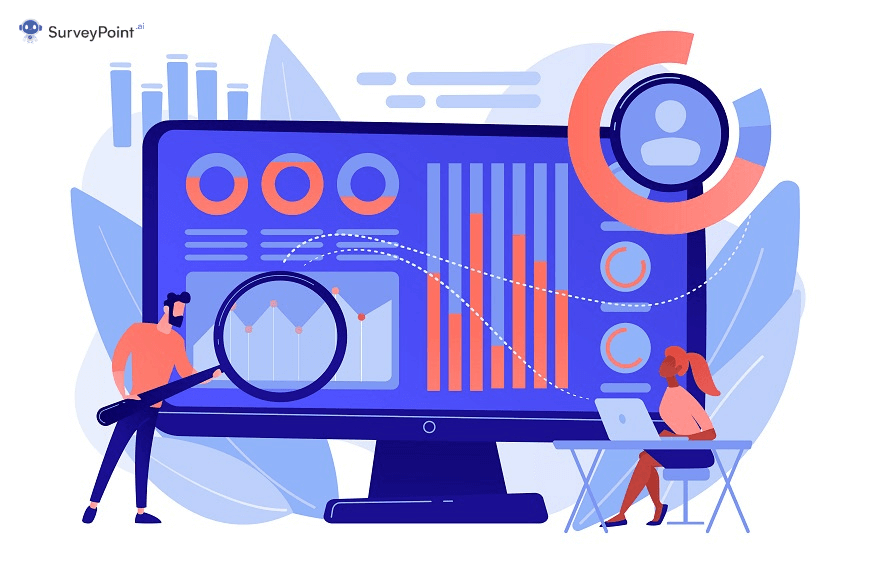
There’s no denying that the concept of the population itself is based on empirical science. Although gathering population data can be challenging, it is a fundamental aspect of our lives.
In its simplest form, population data refers to individuals sharing similar characteristics. Here is a comprehensive guide to understanding this data type, its features, and how it is retrieved from its primary source.
Understanding Population Data
When it comes to population data, the most basic category is data on demographic populations. Simply put, a population is usually determined by geography. Like, the population of the US will include everyone living in that geographical area.
People who study demography, also called demographers, mainly refer to this kind of population as natural. Moreover, a collective group of living beings is considered a population.
Geography is how a population can be defined, understood, and analyzed. Furthermore, religion, gender, and physical characteristics further divided the population into different communities.
RELATED: Why is Geographical Segmentation Important for Marketing?
Why Collecting Population Data Is Important?
Collecting population-based data is essential for understanding human populations’ size, composition, and distribution. This information can inform policy decisions, allocate resources, and plan for future development.
Here are some critical benefits of collecting population-based data:
Planning and Development
Population data can help government agencies and businesses decide where to allocate resources and focus development efforts. Schools, hospitals, or housing may also need to be constructed in areas that need new infrastructure.
Public Health
Population-based data is crucial for understanding the health needs of a population. By tracking factors such as age, gender, and ethnicity, public health officials can identify health disparities and develop targeted interventions to address them.
Demographic Analysis
It can help researchers and policymakers understand demographic trends, such as changes in birth rates, mortality rates, and migration patterns. This information can help governments plan for future needs and allocate resources accordingly.
Political Representation
This data determines the number of seats each state or district is allocated in the legislature. This information is crucial for ensuring fair representation and preventing gerrymandering.
Disaster Response
In the event of a natural disaster or other emergencies, this kind of data can help emergency responders identify areas that may be particularly vulnerable or in need of assistance.
RELATED: Top Data Collection Software To Use For Research
Things To Consider When Collecting Population Data
Here’s a list of essential factors you must keep in mind when collecting data based on the population:
Accuracy
It is essential to ensure that the data collected is accurate and reflects the actual size and composition of the population.
Privacy
It is vital to protect the privacy of individuals when collecting and storing data.
Consistency
The data should be collected and reported consistently over time to allow for meaningful comparisons.
Sampling Methods
The methods used to collect such data, such as sampling techniques and survey questions, can impact the accuracy and usefulness of the data.
Timeliness
This data should be collected and reported on time to ensure that it is helpful for decision-making and planning purposes.
RELATED: How To Determine Sample Size – Definition & Examples
3 Major Sources Of Population Data
Before we get into the sources where you can tap into such data, note that collecting such data can be time-taking and pretty strenuous. Moreover, population data is often divided into two different kinds.
Stock Data: Stock data on population refers to the data collected through social surveys or census. The study provides information on the size, distribution, as well as social, religious, and economic characteristics.
Flow Data: Flow data covers that aspect of population data related to the registration of significant life events like birth, death, or migration.
Here are the three primary sources of collecting population-based data:
Census
Did you know that the census is the largest source of data collection? In the past, people used to collect data using the census too. However, it was limited to prospects like tax collection, etc.
Social, economic, and demographic information is collected, compiled, and published by censuses today.
To simplify it, a census counts the number of people in a particular area during a specific period. In technical terms, this exact time is called Census Moment or Census Time.
One of the best characteristics of a census is that the entire population is counted at once. And, since censuses are generally conducted on a colossal territory like a country, it usually takes a long time to collect data for the census.
The counting mechanism of a location can be influenced by its birth rate, death rate, and migration rate.
If we talk about challenges, one major drawback of this source is the degree of detail required. Other downsides include the accuracy of returns and the period required to cover that specific location.
Vital Statistics
Vital statistics are records of critical events in a person’s life, such as births, deaths, marriages, and divorces. Governments collect and maintain these records and are a valuable source of population data. Here’s how vital statistics can work as a source of population data:
- Births: Vital birth statistics provide information about the number of births, birth rates, and the characteristics of newborns and their parents, such as age, race, and education.
- Deaths: Vital statistics provide information about the number of deaths, causes of death, and the characteristics of the deceased, such as age, race, and sex.
- Marriages: Vital statistics on marriages provide information about the number of marriages, marriage rates, and the characteristics of those getting married, such as age, race, and education.
- Divorces: Vital statistics on divorces provide information about the number of divorces, divorce rates, and the characteristics of those getting divorced, such as age, race, and length of the marriage.
Overall, vital statistics can provide a wealth of information about a population’s size, composition, and characteristics.
Sample Surveys On Demographics
Sample surveys on demographics are a standard method of collecting population data by selecting a representative sample from a larger population and collecting information from that sample. Here’s how sample surveys on demographics work as a source of population data:
- Sampling: The first step in conducting a sample survey on demographics is to select a representative sample from the larger population.
- Survey design: The survey design is then created, including the questions to be asked, the survey format (e.g., online, phone, or in-person), and the sampling method.
- Data collection: Once the survey design is created, data collection can begin. This involves administering the survey to the selected sample and collecting the responses.
RELATED: Survey Data Collection: How to Get the Best Results?
Summing Up
As a result, it is crucial to gather demographic data in order to comprehend the scale, diversity, and distribution of human communities. Policy decisions, resource allocation, and long-term planning can all benefit from the insights provided by demographic data such as birth and death records and random samples collected through surveys.
Researchers and policymakers can also benefit from this information, as it can shed light on societal changes, healthcare demands, and political representation.
Learn to work smarter, not harder!
Explore our solutions that help researchers collect accurate insights, boost ROI, and retain respondents.
Free Trial • No Payment Details Required • Cancel Anytime



